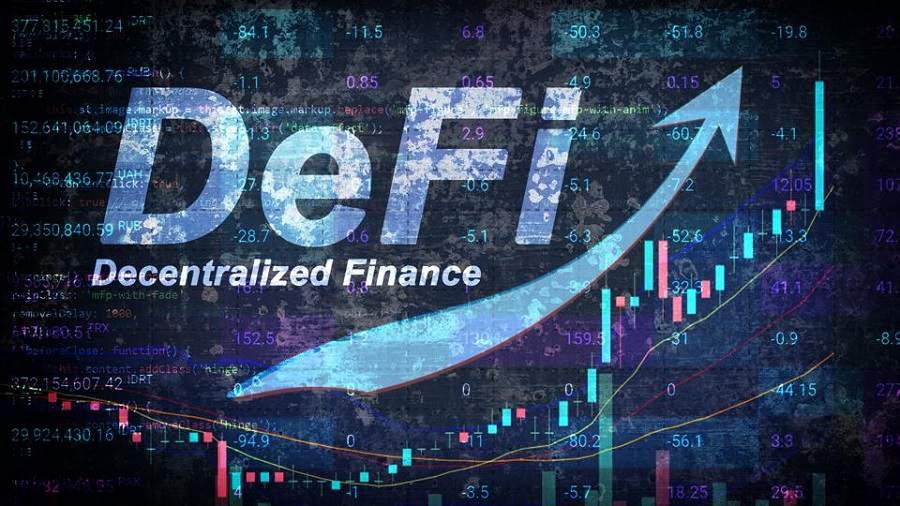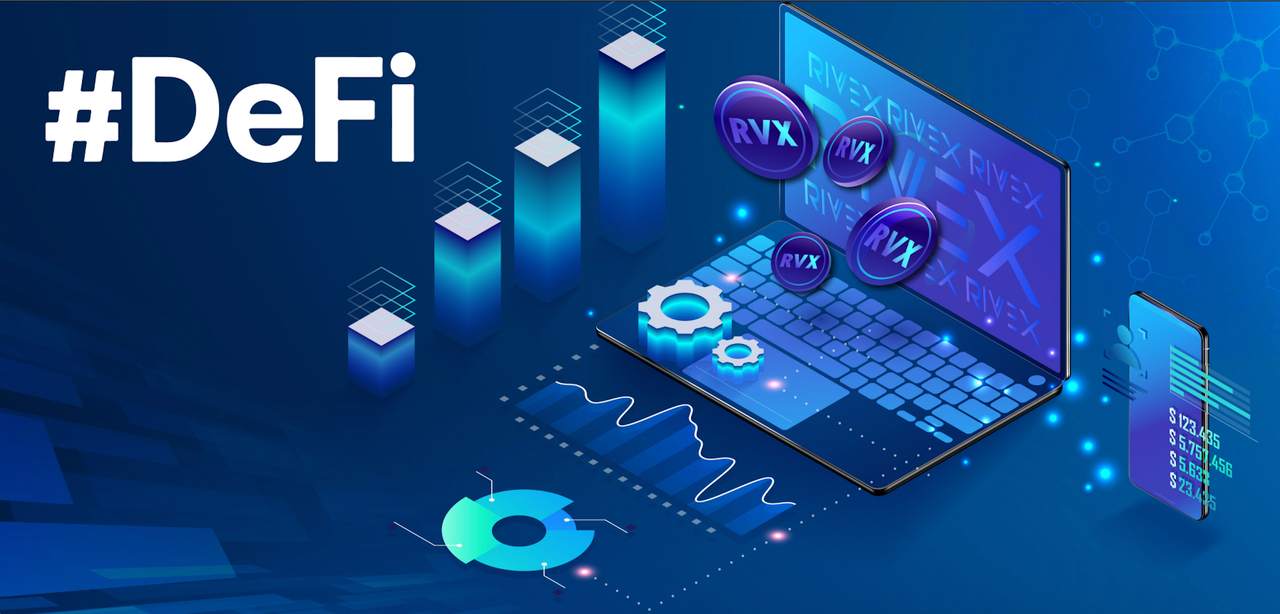Navigating the exciting world of crypto and DeFi, you’ve likely heard the buzz about the potential and profits. But with great reward comes great risk. In this cut-edge financial arena, one question looms large: Is your crypto safe from attack? The truth is, Security risks in Decentralized Finance (DeFi) are as real as they are daunting. From smart contract flaws to the harrowing tales of major DeFi hacks, understanding these risks isn’t just smart; it’s essential for anyone looking to dive into this new economic frontier. Stick with me, and you’ll learn not only how these threats unfold but also how to armor up against them. Let’s break it all down together.
Understanding DeFi Security Threats and Vulnerabilities
Common Smart Contract Flaws and Security Risks
Smart contracts are amazing. They handle your crypto without humans touching it. But, did someone say bugs? Yes, smart contracts can have bugs. These bugs could let a hacker steal your money. Not good, right?
One bug type is reentrancy. It’s when a hacker takes money during a transaction. Another is overflow. This happens when numbers get too big for the contract to handle.
We need to be careful. Always check that smart contracts have someone looking over them. Think of it like a safety check for your car.
Audits and code reviews are key. They can catch flaws before they’re a problem.
Analyzing Major DeFi Hacking Incidents for Lessons Learned
When we see big DeFi hacks, we can learn a lot. Think of them like those “What not to do” examples.
When you break it down, most hacks are due to overlooked holes in security. These can often be spotted and fixed early on. It comes down to checking everything thoroughly.
Some tokens fell to a mix-up in smart contract permissions. Hackers could sometimes trick the system to think they had entry. Not all visitors are welcome, especially in DeFi!
By reviewing these hacks, we see common patterns. We learn where the weak points are.
To stay ahead, we need to study past incidents. It helps us make stronger defenses for the future.
Smart contracts need safety nets. That’s where DeFi insurance policies come in. They add a layer of protection.
Also, build your DeFi knowledge. Know what phishing looks like and avoid it. The more you know, the safer you stay.
Understanding the risks is the first step. Now, let’s use that knowledge to protect our crypto!
Remember, your crypto’s safety depends on staying sharp. Keep an eye out for any suspicious activity. Stay updated, and don’t take shortcuts on security!
Learning from mistakes makes us all safer. Let’s keep growing and protecting our DeFi world together!
Preventative Measures in DeFi Security
Strategies for Effective DeFi Scam Prevention
Keep your crypto safe. That’s a serious job in the wild west of DeFi. Scams lurk everywhere. So what’s key in DeFi scam prevention? Know the tricks. Don’t fall for fast cash promises. They often lead to trouble. Double-check links too. Phishing is a big threat in DeFi. It’s like bait in the water, waiting for a bite. Stick only with well-known DeFi sites. Talk to pros. They know the signs of a scam.
Trust is great. But verify. That’s where auditing matters. Did you know DeFi smart contract vulnerabilities can be spotted ahead? Sure can! Pros dive into the code. It’s like a health check for DeFi. A good checkup highlights the weak spots. Fixes the issues. Remember, a solid contract is your shield against hacks.
What’s a quick scam red flag? Offers that push you to act now. Don’t rush! That’s how folks get trapped. Slow down. Think it through. That’s your guard up.
Learning is power. Educate yourself on DeFi. You’ll spot risks before they spot you. Keep an ear out for new DeFi hacking incidents. They’re lessons packed with what not to do. Ready for a solid tip? Check sites that track DeFi scams. They’ll show you the latest tricks to watch for.
The Role of Auditing in Enhancing DeFi Contract Security
Auditing is not just fancy talk. It’s a safety net. Here’s how it goes: experts look at DeFi code. They look hard. Checking every dot and comma. Why? To ensure no bug lets a hacker in. They work like detectives. Hunting down bugs before they bite.
You hear “flash loan attacks” and “liquidity pool risks”? That’s geek talk for quick and sneaky thefts. Audits help pin down where your DeFi could leak. They suggest patches before a storm hits. Say a code has a loophole. The auditors are those who’ll spot it. Fast. They safeguard your treasure.
Think of audits as your DeFi armor. It’s about having a second pair of eyes. Experts who know the cryptic ways of code. They do more than check. They teach, too. How to keep your contract secure. They share brainy stuff. Like how to avoid impermanent loss. Or steering clear of Oracle manipulation in DeFi.
What’s the cool thing audits do? They give trust. When a DeFi project is audited, it’s like having a seal of approval. Much better than crossing fingers and hoping.
With smart audits, DeFi gets safer. Real safe. It’s not a wild gamble anymore. It turns into wise investing. No more scratching heads, wondering if you’ll get fleeced. Just pure focus on growing your digital dough.
Remember, alongside all the flashy tech talk, human smarts win. The more you know, the better you’re equipped. Go boldly, but wisely, into the DeFi space. And keep those audits frequent. It’s like keeping your ship tight and right, ready to sail the crypto seas without fear of sinking.
The Reality of DeFi Attacks: Flash Loans and Rug Pulls
An In-Depth Look at Flash Loan Attack Mechanisms
Flash loans are big in DeFi. They let you borrow money with no upfront cash. Sounds cool, right? But here’s the catch: you have to pay it back fast—in the same transaction. This is how some folks play dirty. They use flash loans to mess with prices on DeFi platforms. How? They borrow lots of assets, swap them to change prices, and then maybe they bet on those changes to make a profit. It’s like they hit the system fast and vanish with the cash.
To stop this, we need to watch smart contract vulnerabilities. Smart contracts are like the rules for these money games. When we find holes in the rules, we can patch them up, making it harder for the bad guys. We need to check these contracts—a process called auditing—to make our DeFi world safer.
Recognizing and Avoiding Rug Pulls in DeFi Projects
Ever heard of a rug pull? It’s a mean trick in the DeFi space. Imagine a project that looks solid, with a cool new crypto coin you can buy. But then, the folks who made it take all the invested cash and disappear. They’ve just ‘pulled the rug’ out from under you. You’re left with useless coins, and your money is gone.
Here’s how to play it safe. First, dig into the project. Who’s behind it? Do they have a past in crypto? What’s their plan? A good project should be like an open book—full of clear info. Be careful with new projects that promise huge returns quickly. They can be traps. And always check for an audit by real experts. They’re the cops in our DeFi town.
In DeFi, we need to know the risks to keep our crypto safe. Flash loans can play with prices and hurt our investments. Rug pulls can trick us into losing all our money. By staying sharp and informed, we can steer clear of these attacks and protect our crypto playground. Always remember the golden rule: if it’s too good to be true, it probably isn’t true at all. Stay smart, do your homework, and keep your crypto safe!
Fostering a Secure DeFi Ecosystem
Implementing DeFi Security Best Practices for Daily Use
Our daily use of DeFi comes with risks. You must know the top threats. Smart contract vulnerabilities can open doors for hackers. That’s why checking DeFi contracts matters huge. Hackers are always plotting. But don’t worry, we can outsmart them with good moves.
One move is keeping an eagle eye on security. This means you need to audit smart contracts. Always. No audit, no trust. It is that simple. Always update your knowledge, too. New DeFi scams pop up like whack-a-moles. But being informed helps you dodge them.
Flash loan attacks? They’re like quick hits that drain money fast. Learning about them keeps your crypto safe. Think of it as the crypto weather report—you gotta know when a storm’s coming. Impermanent loss can also hit. This happens when price shifts leave you low.
Rug pulls? They’re nasty tricks. Developers vanish with your cash. Key point: Only swim in pools with lifeguards. That’s right, look for projects with strong teams, don’t just dive in. Be sure you also have your guard up against phishing. Phishers trick you to steal keys. Not just passwords, but your sign-in to wealth. So be sharp, and think before you click.
Another tip: look out for governance attacks. They try to tilt a system. Always follow voting and proposals closely. Layer up on safety with multi-signature wallets. Like having several padlocks, they keep your DeFi house safer.
You also need DeFi insurance to back you up. It’s your safety net when the tightrope snaps. Trust me, with the right prep, DeFi is a breeze. So, do your homework and play it smart.
Importance of DeFi Insurance Policies and Safeguards
Let’s chat on insurance. DeFi insurance policies save the day when things go south. They’re your “Uh-oh” plan for “Oops” moments. Without insurance, a single breach can wipe you out. With it, you can rest a bit easier at night.
It’s about reducing what we call liquidity pool risks. Think of it as the buddy system when swimming in deep waters. If one pal gets in trouble, others are there to help. In DeFi, your ‘buddy’ is your insurance policy.
Here is the kicker: DeFi is like the Wild West. Not all towns have sheriffs. With no global DeFi regulatory compliance, it’s truly self-care territory. This means reading up and staying current is on you.
Oracle manipulation? That’s a shady act, tampering with price feeds. It hurts. You’ll want to keep tabs on Oracles. If they falter, your investments could too. Remember, in DeFi, being watchful pays.
Finally, your keys need fortress-level safekeeping. Key management could not be more vital. Lose them, and your stash is gone. So, handle your keys like they are precious gold because, well, they are.
In embracing these practices, we create a sturdy DeFi ecosystem. By being careful and smart, you shield your crypto greatly. Keep these points close to your chest, and watch your digital fortune grow securely.
In this post, we dug into DeFi’s weak spots, like smart contract flaws and the big hacks that taught us tough lessons. We also shared how to stop scams and how key it is to check DeFi contracts before saying “yes.” But attacks do happen. We talked about sneaky flash loans and rug pulls and how you can spot them.
Here’s the deal: a safe DeFi space is key. So, use the best steps every day to keep your DeFi coins safe. And, think about DeFi insurance to guard your money. Stay smart, stay safe, and keep your crypto secure!
Q&A :
What are the common security risks associated with DeFi platforms?
Decentralized Finance (DeFi) platforms operate on the cutting edge of financial technology, leveraging blockchain to facilitate financial transactions without traditional intermediaries. However, this innovation comes with various security risks, such as smart contract vulnerabilities, which can be exploited by hackers due to coding flaws. There are also risks related to the loss or theft of private keys, allowing unauthorized access to funds. Additionally, since DeFi is relatively new, there’s a higher risk of protocol failures due to untested mechanisms or unforeseen interactions between different smart contracts or protocols.
How does the lack of regulation in DeFi contribute to security risks?
The DeFi sector operates with minimal to no regulation, placing the onus of security largely on the individual users and developers. Without regulatory oversight, there are no standardized security protocols, making DeFi platforms more prone to scams, such as rug pulls where developers abandon a project after siphoning funds, or pump-and-dump schemes. Fraudulent activities can go unnoticed longer in the DeFi space, potentially causing significant financial damage before they are discovered and addressed.
Can the interoperability of DeFi platforms lead to increased security risks?
Yes, one of the appeals of DeFi is the interoperability among various protocols and applications. While this feature facilitates a seamless user experience and can lead to innovative financial products, it also increases the complexity of interactions, potentially giving rise to security vulnerabilities. Interoperable platforms can inadvertently introduce bugs or weaknesses that hackers can exploit, especially if their smart contracts or underlying protocols are not rigorously tested and audited.
What are flash loan attacks, and why are they a risk in DeFi?
Flash loan attacks are a unique type of exploit in the DeFi ecosystem, where an attacker borrows a large amount of assets from a DeFi lending protocol without collateral on the premise of returning it within the same transaction block. If the attacker can manipulate the market or the platform’s protocols to their advantage during that brief period, they can make a profit while returning the loan, often at the expense of other users or the platforms themselves. These attacks exploit the real-time execution and settlement nature of DeFi protocols, making them a significant security concern.
How can users mitigate the security risks when using DeFi services?
To mitigate security risks, users should conduct thorough research before investing in DeFi services, such as checking the audit history of the protocols and the transparency of the developers. Utilizing secure wallets, enabling multi-factor authentication, and keeping private keys safe are fundamental personal security measures. Staying informed about the latest security practices and potential vulnerabilities can also help users make more secure decisions in the DeFi space. It’s also prudent for users to diversify their investments and not lock all their assets into a single platform or protocol.




RELATED POSTS
Kraken Launched Layer 2 Ink with $25 Million Support from Optimism
In a landmark move within...
Regulations for Blockchain in the Future: Navigating the Uncharted Waters
Understanding the Future: Regulations for...
How does blockchain increase transparency: How Delivers Transparency
How does blockchain increase transparency?...
How to Keep Your Crypto Wallet Safe: 7 Unbreakable Security Tips
How to keep your crypto...
Detailed steps to participate in the BSX Airdrop quickly
Are you ready to dive...
Wormhole Airdrop – Take Advantage of 3 Valuable Investment Opportunities
Wormhole Airdrop is not only...
James Seyffart: A leading expert on ETFs and Cryptocurrency
James Seyffart is a prominent...
Top 3 Secrets behind Bitcoin Peak that you must know
The rise and fall of...
Advantages and Disadvantages of Different Consensus Mechanisms: A Blockchain Breakdown
Explore the advantages and disadvantages...
What is a double-spending attack? How Safe Are Your Digital Transactions?
What is a double-spending attack?...
Challenges of Blockchain: Can It Truly Prevent Voter Fraud?
Challenges of using blockchain for...
Yala Airdrop – A Great Opportunity to Earn Free Tokens Today
Discover Yala Airdrop now –...
Blockchain Revolution: Slashing Educational Expenses with Tech-Savvy Innovation
Unlocking the Potential of Blockchain...
Ethereum Launch Unveiled: What’s New in the World of Crypto?
Discover the Launch of Ethereum...
Enterprise Blockchain Emergence: Unlocking Top Security Requirements
Addressing specifics of #blockchain model...
Disadvantages of Blockchain: Beyond the Hype, What Are the Real Costs?
Navigate the limitations of blockchain...